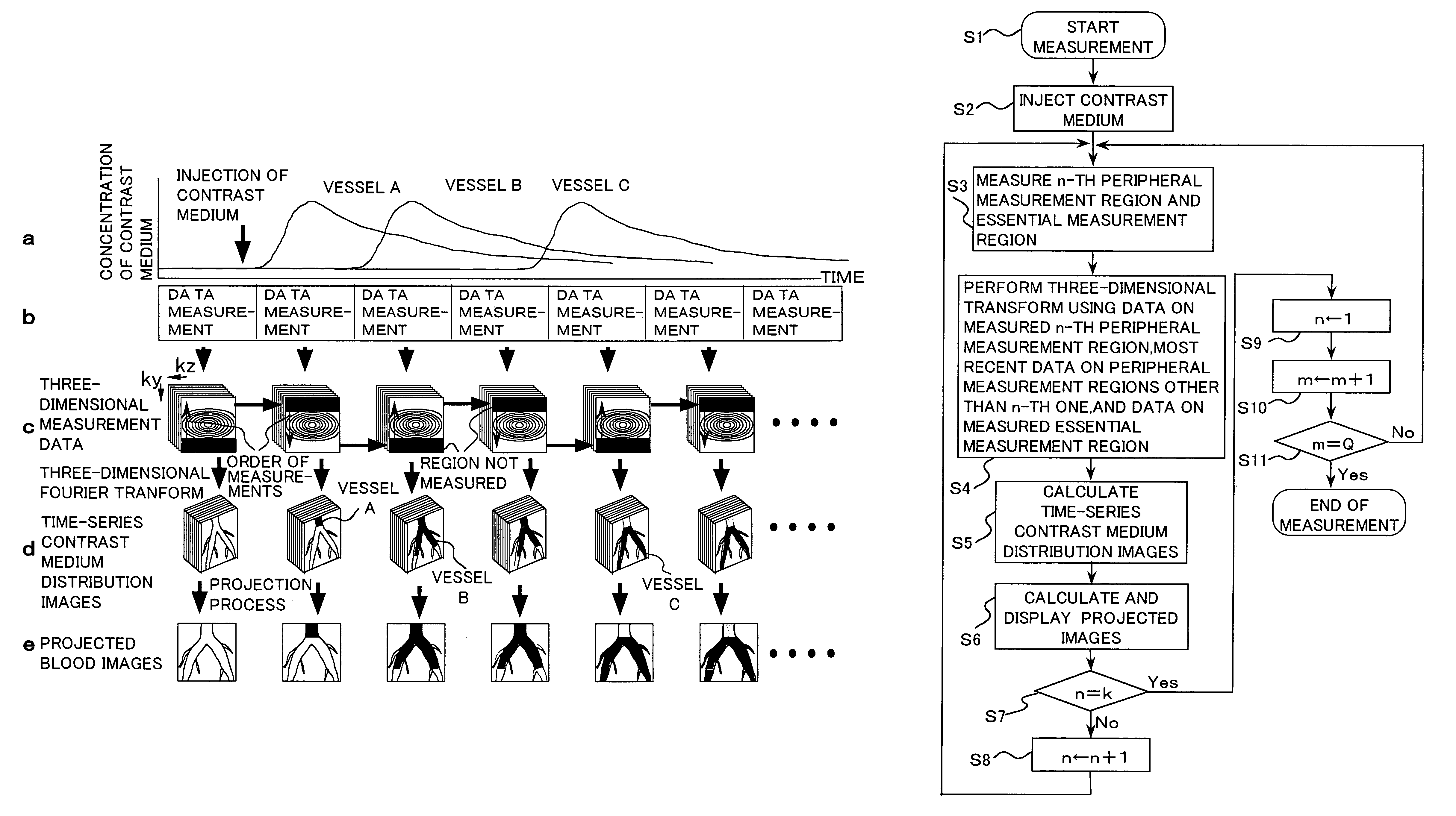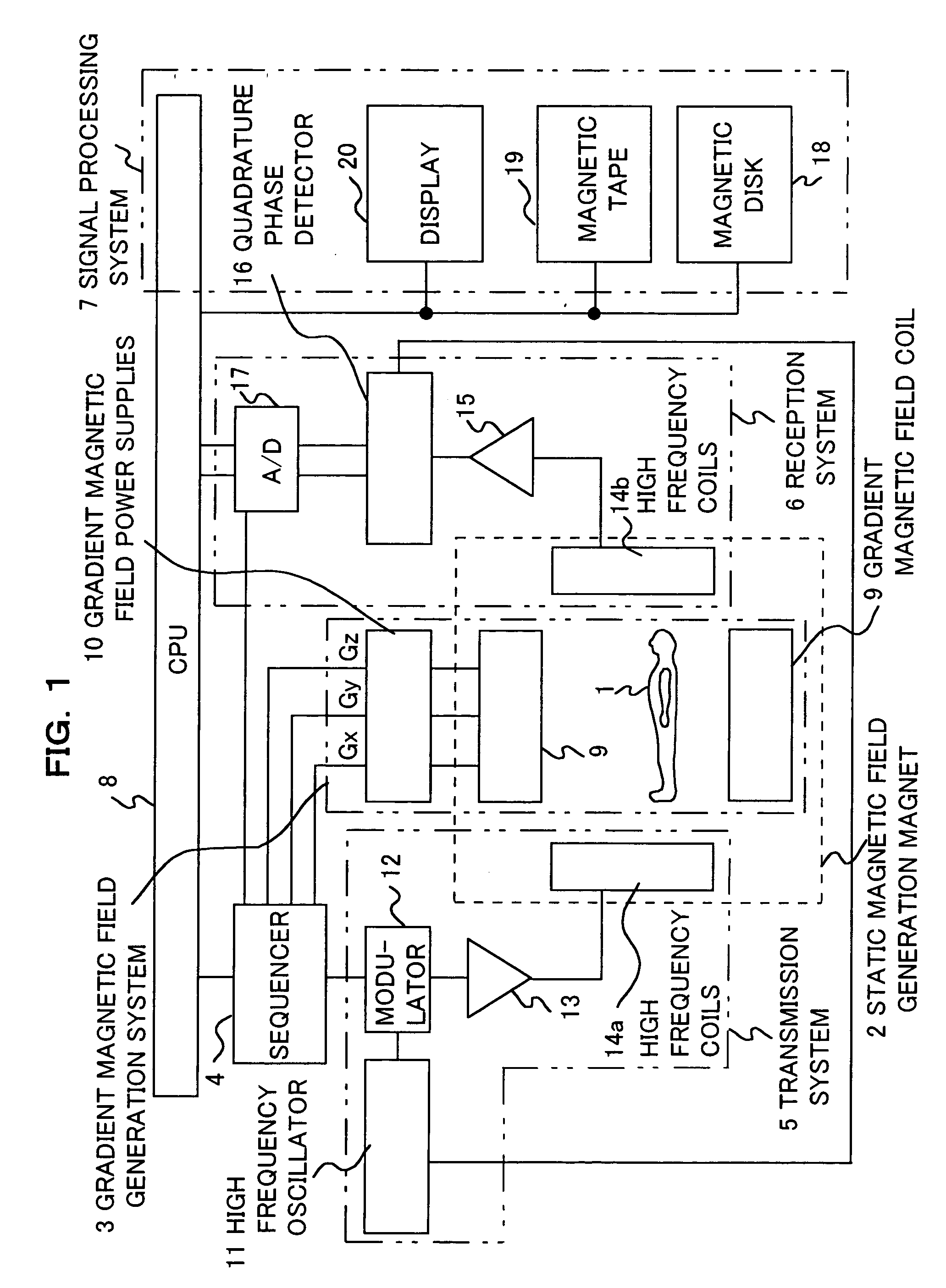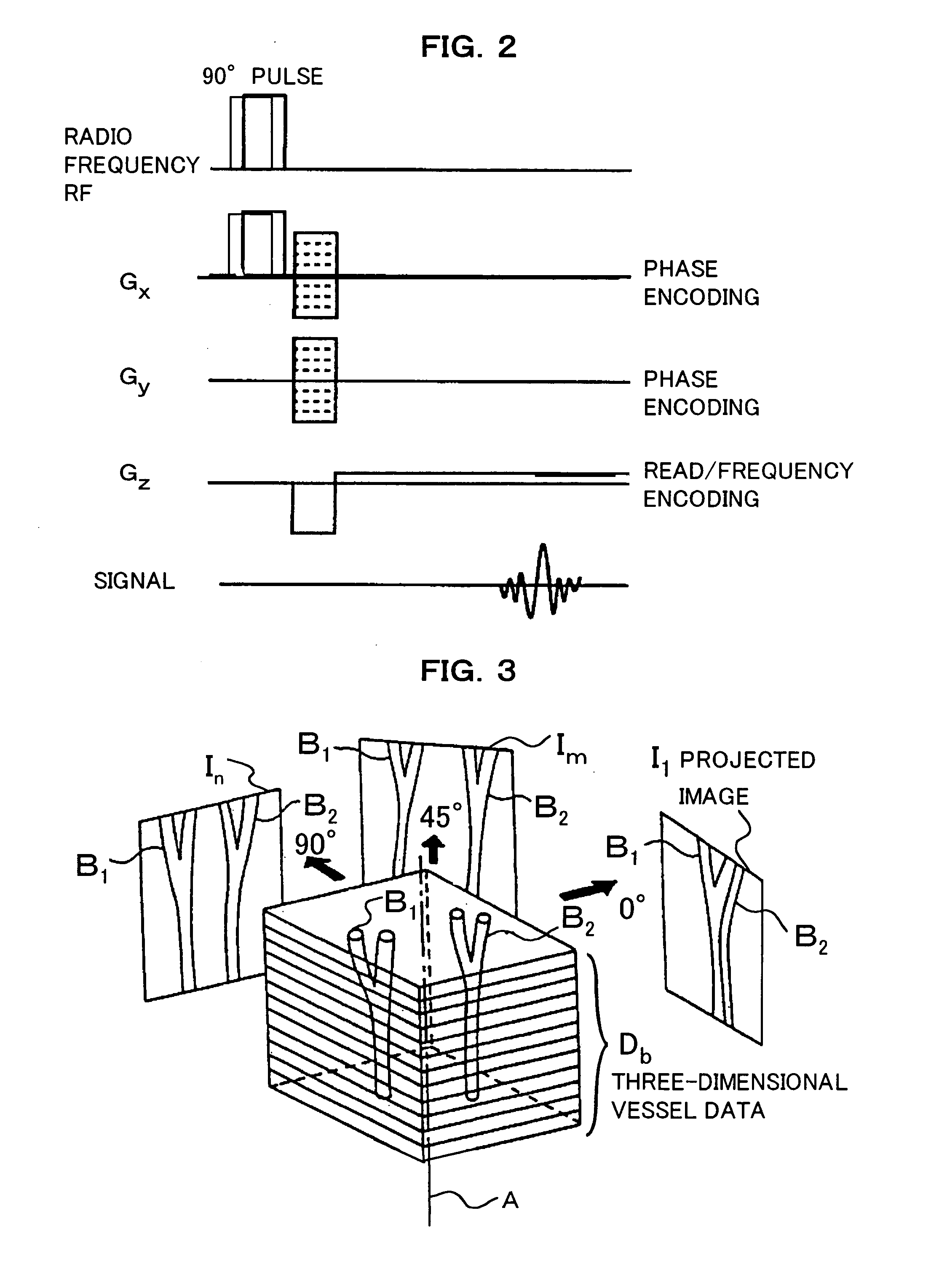Measuring method in magnetic resonance imaging device and magnetic resonance imaging device
a magnetic resonance imaging and measuring method technology, applied in the field of magnetic resonance imaging apparatuses, can solve the problems of deteriorating image quality, affecting the quality of image produced in the high frequency region, and affecting the accuracy of measurement results, so as to improve the quality of reproduction images, reduce the degree of dependency on the direction appearing in the measurement result, and improve the effect of temporal resolution
- Summary
- Abstract
- Description
- Claims
- Application Information
AI Technical Summary
Benefits of technology
Problems solved by technology
Method used
Image
Examples
first embodiment
[0092]In contrast, the present invention does not fix the numbers of steps and step widths in the Z- and Y-directions in each session of measurement in the dynamic MRA imaging, and controls each session of measurement in the following manner.
[0093]Specifically, in the first embodiment of the present invention, an essential measurement region which is a central region, and a plurality of peripheral measurement regions (divided measurement regions) around the essential measurement region are set on a two-dimensional k-space which has coordinate axes ky, kz, the magnitudes of which have been previously determined in accordance with the numbers of possible phase encoding steps in the Z- and Y-directions.
[0094]Here, each of the peripheral measurement regions may partially include the same region as other peripheral measurement regions. The essential measurement region is measured without fail in each session of measurement, while the respective peripheral measurement regions are measured...
second embodiment
[0157]Next, description will be made on the present invention.
[0158]According to the second embodiment, on the ky-kz plane of the three-dimensional k-space having kx, ky and kz coordinate axes which sizes are determined according to the numbers of frequency encoding in the x-direction and the numbers of encoding steps in the Z- and Y-directions, an essential measurement region is set as a center region centered around the origin and a peripheral measurement region is set around the essential measurement region. For the peripheral measurement region, all the sampling points existing within the peripheral measurement region are divided into plural groups.
[0159]Although this is the same as the first embodiment, the second embodiment differs from the first embodiment in a manner that the peripheral measurement region is divided not into plural regions but into plural groups such that the sampling points in each of the groups are distributed so as not to be clustered spatially from one a...
third embodiment
[0187]Next, description will be made on the present invention.
[0188]According to the third embodiment, as an example, a peripheral measurement region is further divided in to a low and intermediate frequency region and a high frequency region and sampling points within each of these regions are divided into groups within each of which the sampling points are distributed uniformly in space.
[0189]That is, as illustrated in FIG. 18, the k-space is divided into an essential measurement region 61 of a low frequency region containing the origin, a low and intermediate frequency region 62 provided at the outside of the essential measurement region and a high frequency region 63 provided at the outside of the low and intermediate frequency region. The respective regions 61, 62 and 63 are mutually exclusive regions and so do not overlap from one another.
[0190]The essential measurement region 61 is a region to be measured at each session of measurement, like the second embodiment. Each of the...
PUM
 Login to View More
Login to View More Abstract
Description
Claims
Application Information
 Login to View More
Login to View More - R&D
- Intellectual Property
- Life Sciences
- Materials
- Tech Scout
- Unparalleled Data Quality
- Higher Quality Content
- 60% Fewer Hallucinations
Browse by: Latest US Patents, China's latest patents, Technical Efficacy Thesaurus, Application Domain, Technology Topic, Popular Technical Reports.
© 2025 PatSnap. All rights reserved.Legal|Privacy policy|Modern Slavery Act Transparency Statement|Sitemap|About US| Contact US: help@patsnap.com



